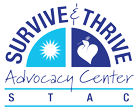You may have heard the phrase “action beyond awareness.” Spreading the word about human trafficking is important, but if it stops there, not much changes. Action beyond just awareness means taking steps to affect positive change in your own community. So, what can you do next? Here are four practical ways to help end human trafficking in your community.
Understand the Issue
Someone once said, “The eyes cannot see what the mind does not know.” This is why it is so important to understand what sex and labor trafficking are all about. Human trafficking is a textured and complicated issue, and there is always more to learn. To truly understand the complexity, you need to listen to many different voices: experts, activists, and most importantly, survivors of human trafficking or “lived experience experts.” Focus on programs that highlight voices of survivors. Hear their stories. Build a deeper understanding.
Popular media, TV and movies often depict trafficking victims or survivors as being helpless and weak – and this is misleading in many ways. These stories often fail to show how strong and resilient survivors are. Also, media and the popular press often do not highlight the many hurdles and challenges they face and the long-term impact of trauma.
STAC offers free monthly webinars that feature lived experience experts. Learn more here.
Counter Misinformation, Especially on Social Media
Knowing the facts about human trafficking doesn’t just mean understanding the truth – it also means calling out myths or other misinformation as it is being spread. Misinformation isn’t just false; it can be dangerous in perpetuating stereotypes about human trafficking and those who are affected by it. This literally helps traffickers and can prevent other victims and survivors from receiving the help and resources they need.
Social media can be a hotbed of misinformation, whether that is re-sharing Tik Tok videos about made-up trafficker tactics or outright lying about child sex trafficking. For example, in 2022, a video went viral when a young woman claimed a series of suspicious texts from an unknown number was linked to human trafficking, aimed at obtaining the user’s phone number to track them.
In truth, the texts were part of a common phishing scam to target the user’s data, but the idea that it was trafficking-related spread rapidly. Check to make sure your source is credible – like the National Human Trafficking Hotline website – before you reshare or believe what you see on social media.
Trafficking situations are complex. Traffickers target people who are in unstable and dire economic situations or have been made vulnerable. They may have tried to escape by telling people about their exploitation, trafficking and abuse but were not believed.
They might comply with a trafficker’s demands out of necessity to protect themselves and loved ones from harm and retaliation. Or they may even believe that they owe a debt to the trafficker and that they cannot leave a trafficking situation until that debt is paid. They may feel ashamed and see no way out of their situation. In almost all cases, there is much more to the story than meets the eye. Read more about the myths surrounding human trafficking here.
Change the Workplace
Human trafficking can happen in any industry – that’s why workplace training is important. If you’re a manager or supervisor, board member, or part of any workplace, find out how you can implement training in your organization. You can take action to bring this important information to your workplace.
Being informed about human trafficking is not only the right thing to do for your community, but also the right thing to do for your bottom line. Every organization can do its part – from restaurants and hotels to the financial and retail sectors, to non-profits and associations. When employees know about this issue and can respond quickly to a possible trafficking situation, they make their workplaces safer for their customers and for their employees. And a safer workplace leads to greater success for your business.
Human trafficking in the workplace puts the public and workforce in danger, poses a serious threat to a brand or company’s reputation, and can lead to revenue loss and even civil or corporate liability. It is a serious risk that should not be ignored. You can register for our free human trafficking business training, STACPRO, here.
Be a Leader
To really affect change, we need leaders who are not afraid to speak up. In practical terms, this means being vocal in your support of organizations like STAC that are working to end human trafficking now. Be generous with your time and resources and encourage others to do the same. Share information about the reality of human trafficking in our community, such as these social media graphics. STAC has provided example captions to make sharing this information as easy as possible.
You Can Make a Difference
Together, we can end human trafficking – but it starts with small, everyday actions. Individual voices. Commitment to making a difference.
Survive and Thrive Advocacy Center supports sex and labor trafficking survivors regardless of age, gender, immigration status, or faith, as well as those who are risk. STAC’s website also has a rich array of information such as topical webinars ranging from CEU-approved training for healthcare professionals to how to protect children and youth from online sex trafficking. Click here to learn more.


